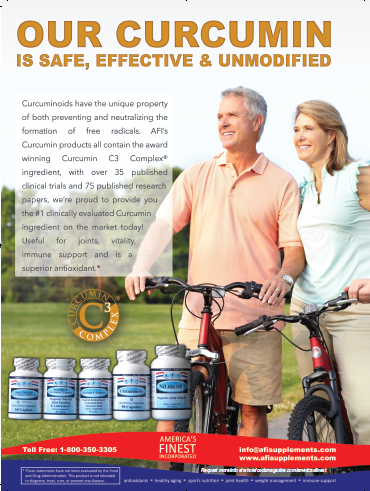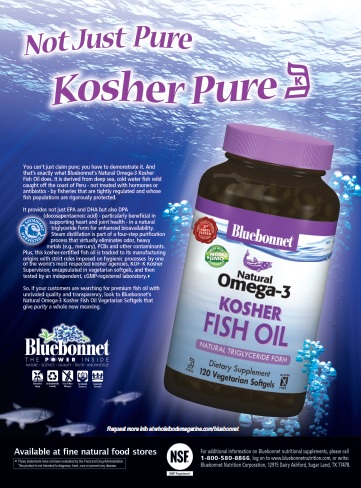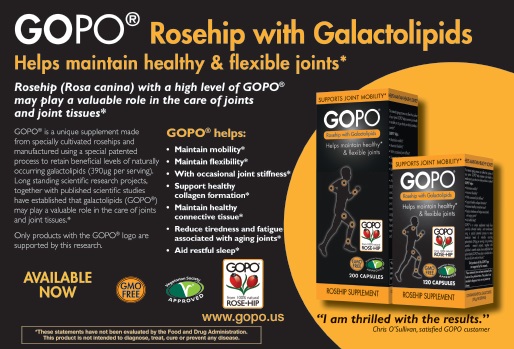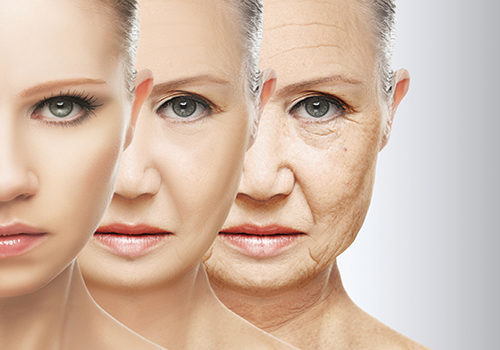While aging is an absolute, how quickly and severely the skin ages may be partly within one’s control. Wrinkles are probably the most visible sign associated with aging. While unavoidable, they are also accelerated by extrinsic forces, so in the end, how someone treats his/her skin influences how it looks in the long run.
The Causes of Wrinkles
Natural. Skin is alive and, like all living things, subject to the forces of nature. The lifecycle of skin cells is short, dying and regenerating about every 28 days in our youth. With age, this turnover slows down. By middle age, new skin cells are only regenerated every 35 days or so (1). Research also suggests that key water-retaining and texture-enhancing compounds such as hyaluronic acid and polysaccharides deplete with age, as well as the production of skin-firming collagen and elastin (1). Some may be genetically predisposed to age quicker or slower, but all these factors are inevitable.
Unnatural. Two of the worst external factors that cause wrinkles are sun exposure and smoking. The sun is hard to avoid, and sunshine does a person a lot of good, but not taking care to protect oneself from UV rays will certainly damage skin. Overexposure to UV rays causes damage to elastin fibers, over time causing one’s skin to stretch and sag because it has lost its ability to bounce back (2). This deficit in elasticity creates wrinkles.
Smoking creates wrinkles because the nicotine in cigarettes narrows the blood vessels in the outermost layers of one’s skin, impairing blood flow and depleting the skin of oxygen and other nutrients such as vitamin A (3). The thousands of other chemicals in tobacco also damage collagen and elastin, creating sagging similar to the way sun damage does (3). Not only that, but the way smokers purse their lips when inhaling a cigarette and squint to keep smoke out of their eyes can advance wrinkles (3).
Wrinkle Therapy
The following are a handful of topical ingredients commonly found in healthy-aging skin care products.
Retinol. Topical retinoids are a well- known and widely used skincare ingredient. Retinoids can be either natural or synthetic derivatives of vitamin A (4). Natural derivatives include tretinoin, retinol and retinaldehyde. Tretinoin is a prescription-grade retinoic acid, while retinol and retinaldehyde are more likely to be found on your store shelves, having similar results with fewer side effects. A review by Pilkington, et al. cited research that found, “Retinol 1.6% when compared to 0.025% retinoic acid produced less erythema while inducing epidermal thickening” (4). The review also said that retinaldehyde had been found, “significantly efficacious in reducing fine lines and improving skin roughness,” and that both retinoids have “sufficient evidence of cutaneous penetration” for the use of decreasing fine lines and wrinkles (4).
Retinoids are well documented to have the potential for causing irritation and skin sensitivity, especially in sunlight. This is why retinoids are often applied at night and it is encouraged that those who use it utilize sunscreen during the course of the day. Retinol and retinaldehyde cause less irritation than tretinoin, but it is something customers should be aware of, especially when using it on sensitive areas such as around the eyes. Ester forms of vitamin A such as retinyl palminate have “less documented irritation than retinol,” but are weaker, requiring a higher concentration (2%) (4).
 Antioxidants. Reactive oxygen species, more commonly known as free radicals, are highly unstable and reactive molecules that affect skin by damaging DNA, cell membranes, proteins and collagen, as well as creating inflammation (4). Free radicals are produced internally, through normal metabolism, and externally, through mechanisms such as sun exposure and smoking (5). Our body’s antioxidant defense mechanism has both endogenous and exogenous antioxidants, which delay or prevent damage caused by free radicals (4). As we age, these defense mechanisms decrease while the free radical production increases (5).
Antioxidants. Reactive oxygen species, more commonly known as free radicals, are highly unstable and reactive molecules that affect skin by damaging DNA, cell membranes, proteins and collagen, as well as creating inflammation (4). Free radicals are produced internally, through normal metabolism, and externally, through mechanisms such as sun exposure and smoking (5). Our body’s antioxidant defense mechanism has both endogenous and exogenous antioxidants, which delay or prevent damage caused by free radicals (4). As we age, these defense mechanisms decrease while the free radical production increases (5).
Vitamic C. Existing predominantly in its reduced form, L-ascorbic acid, vitamin C is a water-soluble antioxidant that neutralizes free radicals intracellularly and extracellularly. Because free radicals are molecules with unpaired electrons, vitamin C protects intracellular structures from oxidative stress by donating electrons (4). Vitamin C is the most abundant antioxidant in human skin, but is depleted by sunlight and environmental pollution (4, 5).
Because of its role in collagen biosynthesis, vitamin C plays an active role in skin rejuvenation while other antioxidants provide temporary improvement of wrinkles through mechanisms such as hydration (5). Like with many antioxidants, the greatest challenge with administration is the stability of the product (4). Because L-ascorbic acid is water soluble, it is therefore prone to oxidation, resulting in an inactive by-product. Esterified derivatives such as magnesium ascorbyl phosphate and sodium ascorbyl phosphate have been utilized to improve stability.
Vitamin E. This lipid-soluble antioxidant (a-tocopherol) acts as a protective agent for the cell membrane and the stratum corneum lipid bilayer (4). A four-month facial study found that application of 5% topical vitamin E improved periorbital wrinkling and reduced post-UV inflammation (4). There is also evidence that combining antioxidants has increased benefits and greater stability (4). The combination of 15% L-ascorbic acid and 1%αa-tocopherol showed a fourfold photoprotection from erythema and sunburn, which Pilkington et al. say was the result of a “stabilized formulation, in which L-ascorbic acid is available to regenerate a-tocopherol whenever it is oxidized” (4).
Growth factor. After clinical data demonstrated the role of growth factors in wound healing, they are increasingly being incorporated into cosmeceuticals for the purpose of skin rejuvenation. They have been shown to play in an important role in the repair and remodeling of dermal infrastructure, with specific growth factors affecting the proliferation of dermal fibroblasts and extracellular matrix production (4). Pilkington et al. cite a study by Hussain et al., which, by using skin creams mixed with human growth factors and cytokines obtained from human fetal fibroblasts, reported, “33-percent improved clinical appearance of periorbital wrinkles after six months of twice daily use” (4). The authors posit that the topical application of growth factor promotes the growth of keratinocytes, dermal fibroblasts and other cells (4).
Plant-based growth factors include kinetin and chlorella growth factor. Kinetin is a type of compound that promotes plant growth called cytokinin, and is often used in topical creams to manage photodamage and aging. A recent study investigating the efficacy of 0.1% kinetin found that, when assessed on the four parameters of overall skin condition, skin texture, skin color and wrinkles, patients reported the greatest improvement on wrinkles (6). The study went on to say that when assessed by a physician, patients showed “significant overall improvement between weeks four and 12,” and, “Improvements were also observed between baseline and 12 weeks,” on all parameters, “with skin texture improving the most”(6).
Chlorella growth factor is derived from chlorella, a green micro-algae rich in proteins, particularly in the amino acids that constitute the dermis fibers (7). The results of one study, in which 11 volunteers applied a cream containing 1% chlorella extract at 1% twice daily for 84 days, showed that collagen expression increased in human fibroblasts by 333% and elastin expression in fibroblast increased by 35% (7). Elafin, which inhibits elastase, an enzyme responsible for the degradation of elastin fibers, showed increased expression in keratinocytes by +183% (7). Results also demonstrated a decrease in the morphology of stretch marks on average of 2.9%, but as much as 7.9% individually, after the 84 days (7).
Multiproduct Regimen
A recent study demonstrated the efficacy of implementing a multiproduct, daily skin care regimen. The study was conducted over 24 weeks on subjects suffering from moderate to severe photodamage and hyperpigmentation, using six products. The regimen is described by the acronym GRASS: growth factors, retinol, antioxidants, specialty products and sunscreen. The results of the study showed, “progressive improvement over time without a plateau effect,” with a “statistical improvement at the first evaluation visit (Week 4)” (8). Additional ingredients for youthful skin include peptides, phytoceramides, Pycnogenol and more. WF
Published in WholeFoods Magazine December 2015
References
1. M.M. Eby and K.A. Gazella, “Return to Beautiful Skin: Your Guide to Truly Effective, Nontoxic Skin Care,” Basic Book Publications, Inc., Laguna Beach, CA. (2008).
2. Web M.D., “Cosmetic Procedures: Sun Exposure and Skin Cancer,” www.webmd.com/beauty/sun/sun-exposure-skin-cancer, accessed Oct.12, 2015.
3. Mayo Clinic, “Skin Care: 5 Tips For Healthy Skin,” www.mayoclinic.org/healthy-lifestyle/adult-health/in-depth/skin-care/art-20048237?pg=1, accessed Oct.12, 2015.
4. S.J. Pinklington et al., “The Tricky Tear Trough: A Review of Topical Cosmeceuticals for Periorbital Skin Rejuvination,” J. Clin. Aesthet. Dermatol. 8 (9), 39–47 (2015).
5. B. Allemann and L. Baumann, “Antioxidants Used in Skin Care Formulations,” Skin Ther. Letter 13 (7), 5–9 (2008).
6. R. Wanitphakdeedecha et al., “Efficacy and Safety of 0.1% Kinetin Cream in Treatment of Photoaging Skin,” Ind. J. Dermatol. Venerol. Leprol. 5 (81), 547–552 (2015).
7. P. Morvan and R. Vallee, “Effects of Chlorella Extract on Skin.” Personal Care. Nov. 2007.
8. J.H. Herndon et al., “Long-term Multi-product Facial Regimen in Subjects with Moderate-to-Severe Photodamage and Hyperpigmenta









